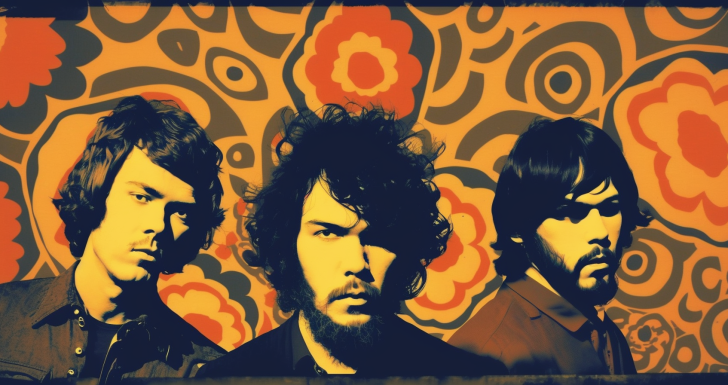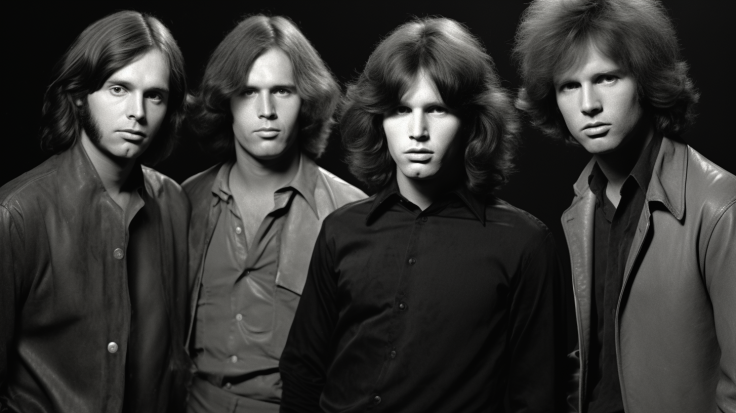
 The Doors – Masters of the Psychedelic Rock Experience
The Doors – Masters of the Psychedelic Rock Experience
The 1960s was a transformative decade for music, and at the heart of the cultural revolution was a band that would leave an indelible mark on the world of rock and roll: The Doors. Comprising vocalist Jim Morrison, keyboardist Ray Manzarek, guitarist Robby Krieger, and drummer John Densmore, The Doors emerged from the vibrant music scene of Los Angeles in 1965. Their unique blend of rock, blues, and psychedelia, coupled with Jim Morrison’s enigmatic stage presence and poetic lyrics, made them one of the most influential bands of their era. In this article, we will delve deep into the world of The Doors, exploring the formation of the band, the distinctive roles of each member, their iconic music, and their lasting cultural impact.
The Birth of The Doors
The Doors’ story begins in Los Angeles in 1965 when Jim Morrison and Ray Manzarek, two UCLA film school graduates, crossed paths on Venice Beach. It was a chance encounter that would change the course of music history. Morrison, with his distinctive baritone voice and poetic sensibilities, had a vision of forming a band that would push the boundaries of rock music. Manzarek, a classically trained pianist and organist, was immediately captivated by Morrison’s charisma and lyrical prowess. The two decided to form a band, and soon they were joined by guitarist Robby Krieger and drummer John Densmore.
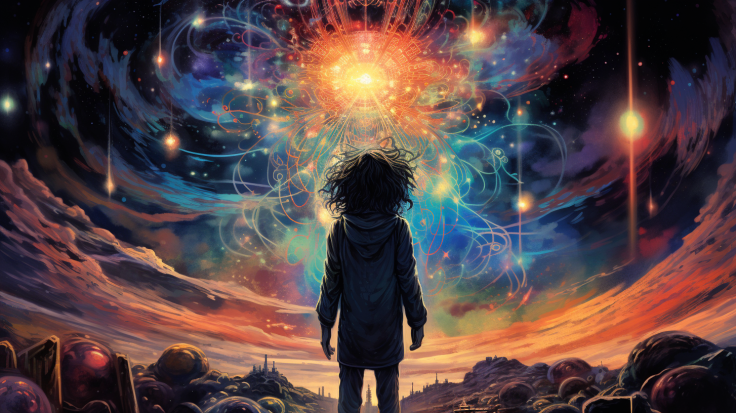
Early Musical Influences and Inspirations
The Doors drew inspiration from a wide range of musical genres, creating a sound that was both innovative and eclectic. They were heavily influenced by blues and rock pioneers like Robert Johnson, Muddy Waters, and Elvis Presley, but they also incorporated elements of jazz, classical music, and poetry into their music. This diverse range of influences set them apart from their contemporaries and contributed to the development of their signature sound.
The Origin of the Band’s Name
The band needed a name that would reflect their unconventional approach to music and art. According to legend, the name “The Doors” was inspired by Aldous Huxley’s book “The Doors of Perception,” which explored the idea that altering one’s perception could lead to a deeper understanding of reality. This concept resonated with the band’s ethos of pushing boundaries and challenging the status quo, making it a fitting choice for their name.
Jim Morrison: The Enigmatic Frontman
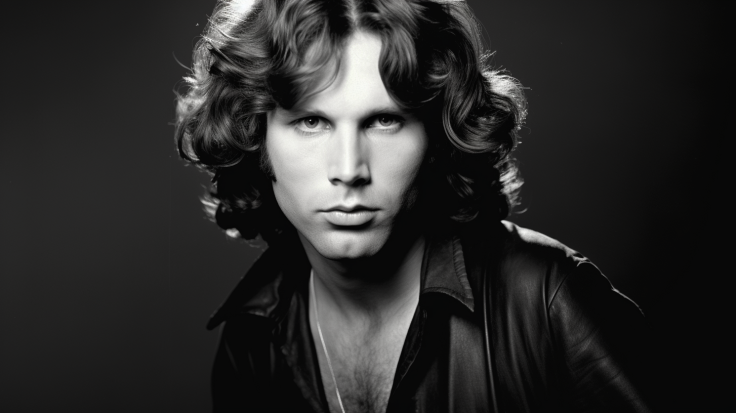
Jim Morrison was the face and voice of The Doors, and his impact on the band’s identity cannot be overstated. With his brooding good looks, magnetic stage presence, and distinctive baritone voice, Morrison quickly became a mesmerizing frontman. His performances were often raw and unpredictable, creating an atmosphere of excitement and danger that drew audiences in.
Morrison was not only a singer but also a poet. His lyrics were often introspective, enigmatic, and at times, controversial. Songs like “The End” and “The Crystal Ship” showcased his poetic sensibilities, while tracks like “Light My Fire” and “Break on Through” combined his words with catchy melodies, making them instant classics. Morrison’s ability to convey complex emotions and ideas through his lyrics added depth to The Doors’ music.
Morrison’s offstage persona was as enigmatic as his onstage presence. He embraced a rebellious, free-spirited lifestyle, which often led to controversy. His arrest for indecent exposure during a 1969 concert in Miami is a well-known example of his provocative behavior. This incident fueled the legend of Morrison as a rock ‘n’ roll outlaw, and it only added to his mystique.
Ray Manzarek: The Keyboard Wizard
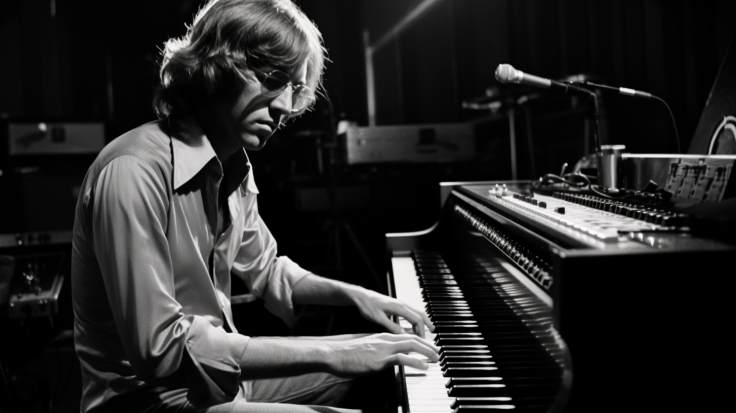
While Jim Morrison was the charismatic frontman, Ray Manzarek played a crucial role in shaping The Doors’ sound with his innovative keyboard work. His use of the Vox Continental organ and Fender Rhodes electric piano added a unique dimension to the band’s music. Manzarek’s ability to seamlessly switch between different keyboard instruments allowed The Doors to experiment with various sounds and textures.
Manzarek’s background in classical music and his love for jazz were evident in his keyboard playing. He brought a level of sophistication to the band’s music, infusing it with jazz-inspired improvisation and classical harmonies. This fusion of genres set The Doors apart from the typical rock bands of their time and contributed to their psychedelic sound.
One of the key dynamics within The Doors was the collaboration between Jim Morrison and Ray Manzarek. Manzarek often provided the musical framework for Morrison’s lyrics, creating a synergy that resulted in some of the band’s most iconic songs. Their creative partnership was instrumental in defining The Doors’ unique sound.
Robby Krieger: The Guitar Guru
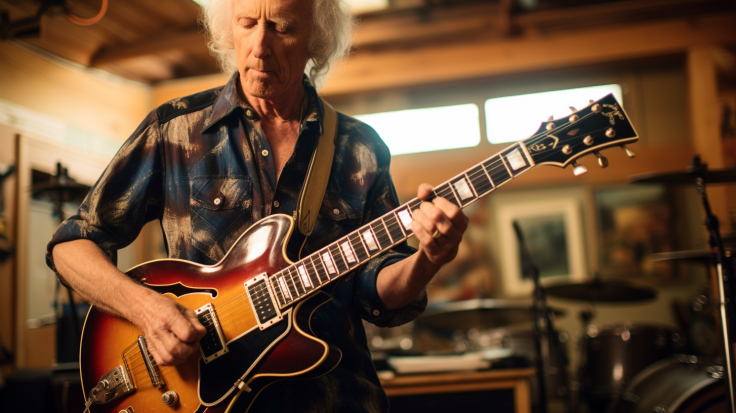
Robby Krieger‘s guitar work was characterized by its melodic sensibility and bluesy undertones. He had a knack for crafting memorable guitar riffs that complemented Morrison’s lyrics. Songs like “Love Me Two Times” and “Roadhouse Blues” exemplify Krieger’s skill in blending rock and blues elements. His songwriting contributions added depth and diversity to The Doors’ catalog.
Krieger’s versatility as a guitarist allowed The Doors to experiment with different musical styles. He incorporated elements of flamenco, Indian music, and even psychedelia into the band’s songs. This willingness to push boundaries and explore new sonic territories set The Doors apart from their contemporaries.
While Jim Morrison and Ray Manzarek often garnered the most attention, Robby Krieger’s contribution to the band’s sound should not be underestimated. His guitar work added a layer of complexity and emotion to The Doors’ music, and his ability to adapt to various musical styles was instrumental in defining the band’s eclectic sound.
John Densmore: The Rhythmic Backbone
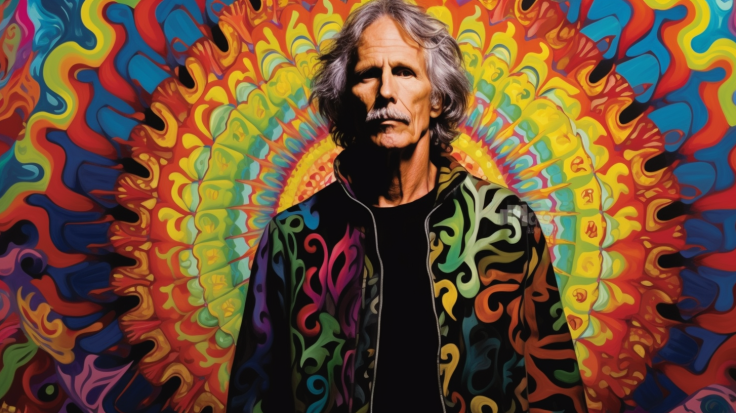
John Densmore‘s drumming style was the rhythmic backbone of The Doors. His jazz-influenced approach to drumming gave the band a unique groove that set them apart from other rock acts of the era. Densmore’s ability to create complex rhythms and his intuitive sense of timing added depth to the band’s sound.
Densmore’s background in jazz music was a key element in shaping The Doors’ rhythmic patterns. He seamlessly blended rock and jazz rhythms, creating a dynamic and fluid musical landscape. This fusion of genres allowed the band to experiment with extended instrumental passages and improvisation during their live performances.
The Doors were known for their electrifying live performances, which often featured extended improvisational sections. John Densmore played a crucial role in these moments, providing the rhythmic foundation that allowed the band to explore new musical territories on stage. The spontaneity and energy of their live shows became a hallmark of The Doors’ legacy.
The Psychedelic Sound of The Doors
The Doors’ Fusion of Rock, Blues, and Psychedelia
At the core of The Doors’ music was a fusion of rock, blues, and psychedelia. Their sound was characterized by its hypnotic rhythms, haunting melodies, and Morrison’s introspective lyrics. Tracks like “The End” and “When the Music’s Over” showcased the band’s ability to create sonic journeys that immersed listeners in a psychedelic experience.
Key Albums That Exemplify Their Psychedelic Sound
Several albums by The Doors exemplify their psychedelic sound and artistic evolution. Their self-titled debut album, released in 1967, featured hits like “Light My Fire” and “Break on Through” and introduced the world to their distinctive sound. “Strange Days” (1967) continued to explore psychedelic themes, while “Waiting for the Sun” (1968) and “The Soft Parade” (1969) showcased the band’s evolving musical experimentation.
The Role of Studio Experimentation in Shaping Their Music
The Doors were pioneers of studio experimentation, pushing the boundaries of what could be achieved in a recording studio. They incorporated unconventional instruments, such as the marxophone and harpsichord, into their music and used innovative recording techniques to create unique sonic textures. This commitment to innovation allowed them to create music that was both ahead of its time and timeless.
Iconic Songs and Albums
The Doors’ discography is replete with iconic songs that have left an indelible mark on rock music. “Light My Fire,” perhaps their most famous track, combined Morrison’s passionate vocals with Krieger’s memorable guitar riff and Manzarek’s swirling organ. The lyrical and musical depth of songs like “Riders on the Storm” and “The End” has continued to captivate audiences for decades.
Breakdown of Their Landmark Albums
The Doors released a series of landmark albums that defined their career. Their eponymous debut album, “The Doors,” featured tracks like “Break on Through” and “The End” and established them as a force to be reckoned with. “L.A. Woman,” released in 1971, showcased the band’s bluesy and matured sound, with tracks like “Riders on the Storm” and the title track becoming instant classics.
Top 5 Timeless Tracks by The Doors
The Doors, an iconic rock ensemble hailing from the 1960s, etched an indelible imprint on the musical landscape, fusing the ethereal realms of psychedelia, blues, and rock. Guided by the enigmatic Jim Morrison, the group unveiled a series of legendary albums before Morrison’s untimely departure in 1971. Their profound influence on the realm of rock music and popular culture perseveres, rendering it apt to delve into the quintessential compositions within their remarkable repertoire.
Break On Through (To the Other Side)
This song serves as a rock anthem, emanating from The Doors’ 1967 discography. The song’s vigorous guitar riff and Jim Morrison’s dynamic vocals propelled the band into the forefront of the rock music scene. The lyrics inspire listeners to transcend societal norms and surpass their confines. With its unbridled energy and potent message, Break On Through firmly established itself as a rock and roll classic, a testimony to The Doors’ early brilliance.
The End
The End emerges as a psychedelic rock saga from The Doors’ eponymous debut album in 1967. Featuring a haunting melody, enigmatic lyrics, and a dramatic instrumental arrangement, it culminates in an intense climax. The song’s evocative imagery and cryptic references have solidified its status as an iconic Doors track. With an extended duration and cinematic quality, it showcases Jim Morrison’s spoken-word segment, open to manifold interpretations. “The End” often garners recognition as a quintessential anthem of the 1960s, frequently featured in diverse films, TV shows, and other media.
Light My Fire
Light My Fire epitomizes The Doors’ distinctive fusion of rock and psychedelia, securing its place as the quintessential Doors composition. Released in 1967, it swiftly ascended to the pinnacle of the Billboard Hot 100 chart, cementing its position in rock history. Ray Manzarek’s distinctive keyboard introduction and Robby Krieger’s unforgettable guitar solo define the track. Jim Morrison’s evocative lyrics convey an ardent longing for freedom and pleasure. The song’s extensive instrumental segment, coupled with Morrison’s charismatic vocals, have enshrined it as a cornerstone of classic rock radio and a frequent choice for reinterpretations.
Riders on the Storm
Riders on the Storm stands as a haunting and atmospheric masterpiece from The Doors’ final opus, “L.A. Woman.” Its prominent bassline and keyboard riff create an eerie ambiance, while Morrison’s vocals paint a vivid portrayal of a tempestuous night. Lyrics like “Into this house we’re born, into this world we’re thrown” engender an enigmatic atmosphere. The track culminates in an instrumental passage showcasing Ray Manzarek’s Fender Rhodes piano and Robby Krieger’s guitar prowess. The amalgamation of Morrison’s poetry, the atmospheric soundscape, and the band’s signature psychedelic resonance render Riders on the Storm an indelible Doors classic.
People Are Strange
People Are Strange exudes a melancholic and haunting ambiance, stemming from The Doors’ 1967 album, “Strange Days.” Jim Morrison’s distinct vocal timbre and the band’s characteristic organ sounds dominate the composition. The lyrics, co-penned by Morrison and Robby Krieger, delve into themes of alienation and the sensation of being an outsider. The opening line, “People are strange when you’re a stranger, Faces look ugly When you’re alone” encapsulates the song’s essence. This song has evolved into one of The Doors’ most cherished and iconic creations, frequently reimagined by various artists.
The Doors, fronted by the enigmatic Jim Morrison, have etched an indomitable legacy in the realm of rock music. Their melodies continue to captivate audiences, transcending generations. “Light My Fire,” “Riders on the Storm,” “Break On Through (To the Other Side),” “The End,” and “People Are Strange” provide but a glimpse into their rich musical tapestry. These compositions exemplify the band’s evolution, Morrison’s poetic lyricism, and their enduring influence on the world of rock music. The Doors’ stature as one of the preeminent rock bands in history remains unassailable, and their music endures as a testament to their lasting impact.
The Doors’ Cultural Impact
The Doors were emblematic of the counterculture movement of the 1960s. Their music and lyrics resonated with a generation seeking freedom, self-expression, and spiritual exploration. Songs like “People Are Strange” and “The Unknown Soldier” tackled societal and political issues, making The Doors a voice of dissent and reflection during a tumultuous era.
Their Portrayal in Media and Pop Culture
The Doors’ impact extended beyond music and into film and literature. Oliver Stone’s 1991 biopic, “The Doors,” starring Val Kilmer as Jim Morrison, introduced a new generation to the band’s legacy. Additionally, numerous books, documentaries, and retrospectives have explored the band’s history and significance.
The Enduring Legacy of The Doors in Modern Music
The influence of The Doors can be heard in the music of countless artists across genres. Their blend of rock and psychedelia paved the way for bands like Pink Floyd and Led Zeppelin, while their introspective lyrics inspired generations of songwriters. The band’s timeless sound continues to resonate with listeners today, proving the enduring power of their music.
The Tragic End and Legacy
The Untimely Death of Jim Morrison in 1971
The Doors’ journey took a tragic turn when Jim Morrison passed away in 1971 at the age of 27. His death marked the end of an era and left fans mourning the loss of a charismatic and enigmatic frontman. Morrison’s legacy as a poet and rock icon endured, but his untimely demise left a void that could never be filled.
The Band’s Decision to Carry On Without Morrison
In the wake of Morrison’s death, The Doors faced a difficult decision. Ultimately, they chose to carry on as a trio, with Ray Manzarek, Robby Krieger, and John Densmore taking on vocal duties. While this period produced albums like “Other Voices” and “Full Circle,” it was clear that the band’s creative spark had dimmed without Morrison.
The Post-Morrison Era and Its Impact on the Band’s Legacy
The post-Morrison era was a challenging time for The Doors. While they continued to tour and release music, they struggled to recapture the magic of their earlier years. Despite the difficulties, the band’s enduring commitment to their music ensured that their legacy remained intact, even as they faced the shadow of their former frontman’s absence.
The Enduring Legacy of The Doors
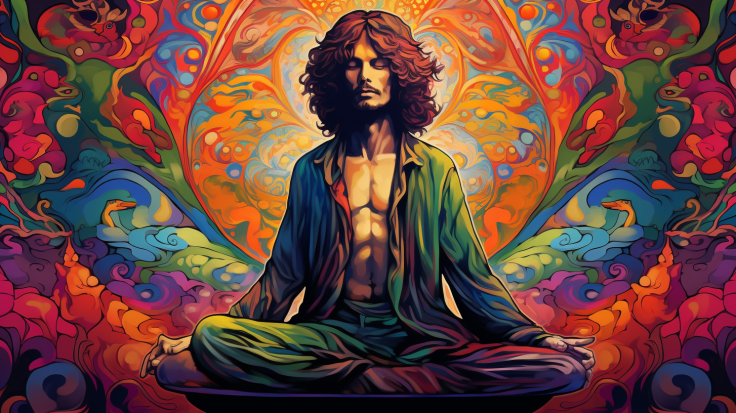
The Doors’ journey through the 1960s and beyond is a testament to their musical genius and cultural significance. Jim Morrison, Ray Manzarek, Robby Krieger, and John Densmore created a body of work that defied categorization, blending rock, blues, and psychedelia into a sound that was uniquely their own. Their impact on music, culture, and the counterculture movement of the 1960s is immeasurable. With their enduring legacy, The Doors continue to be celebrated as masters of the psychedelic rock experience, their music transcending time and leaving an indelible mark on the world of rock and roll.
Categorised in: Psychedelic


